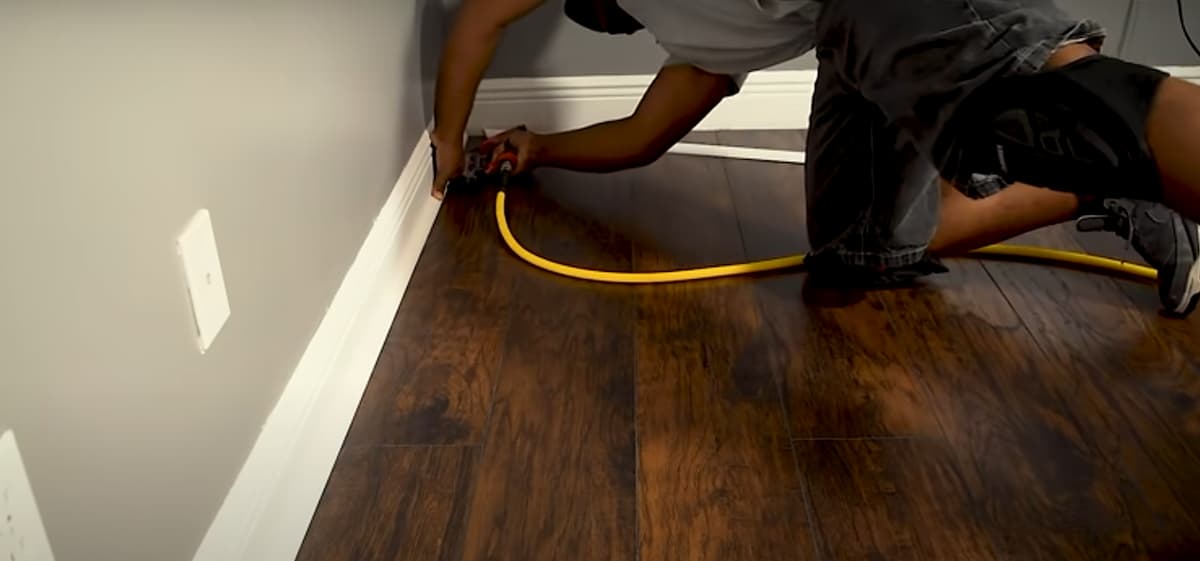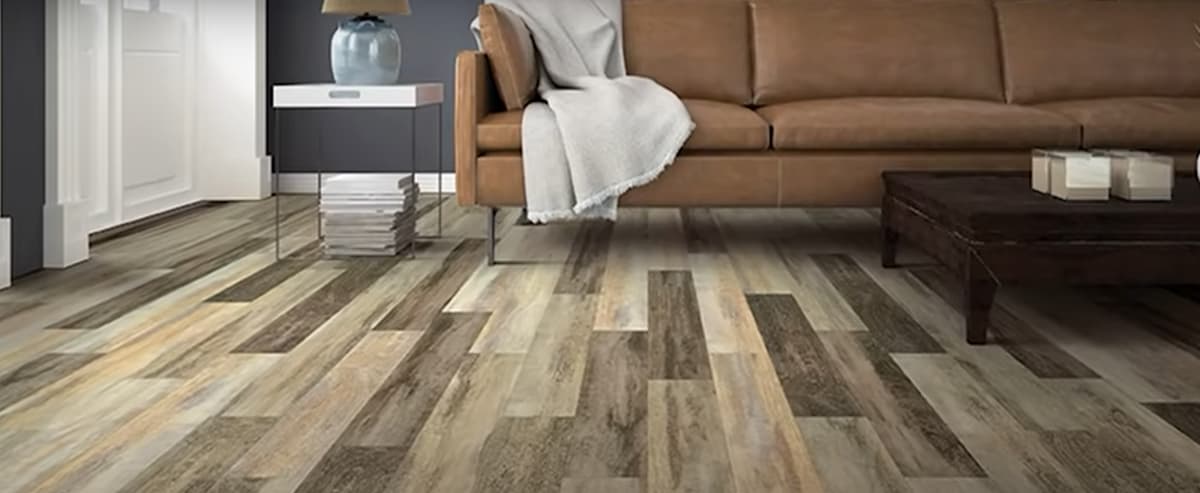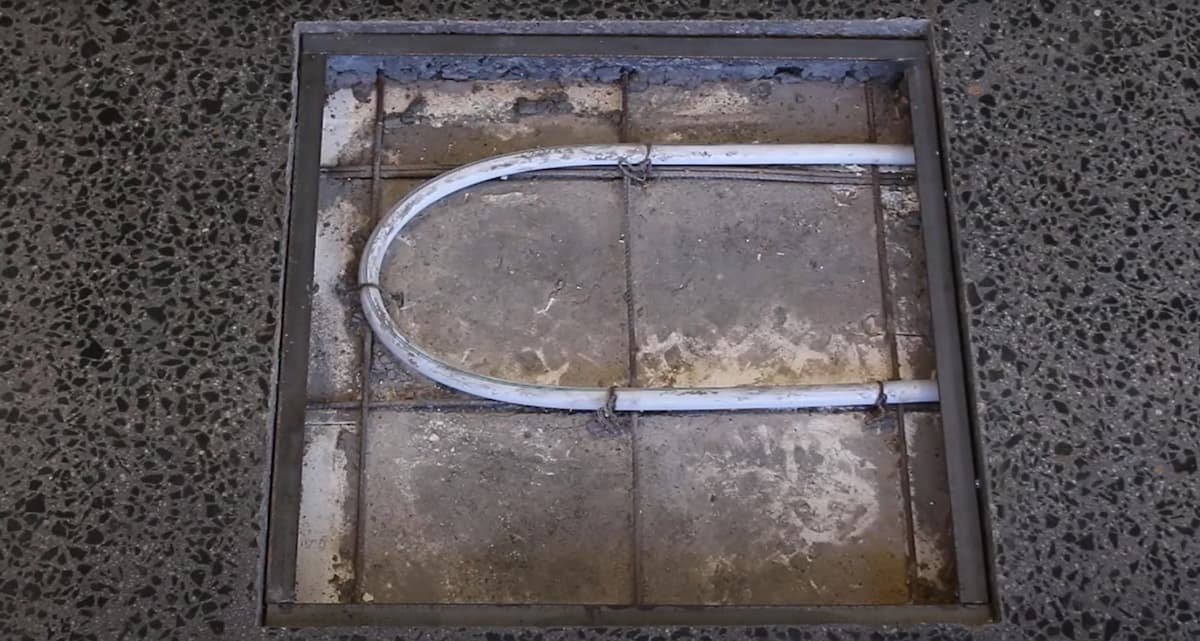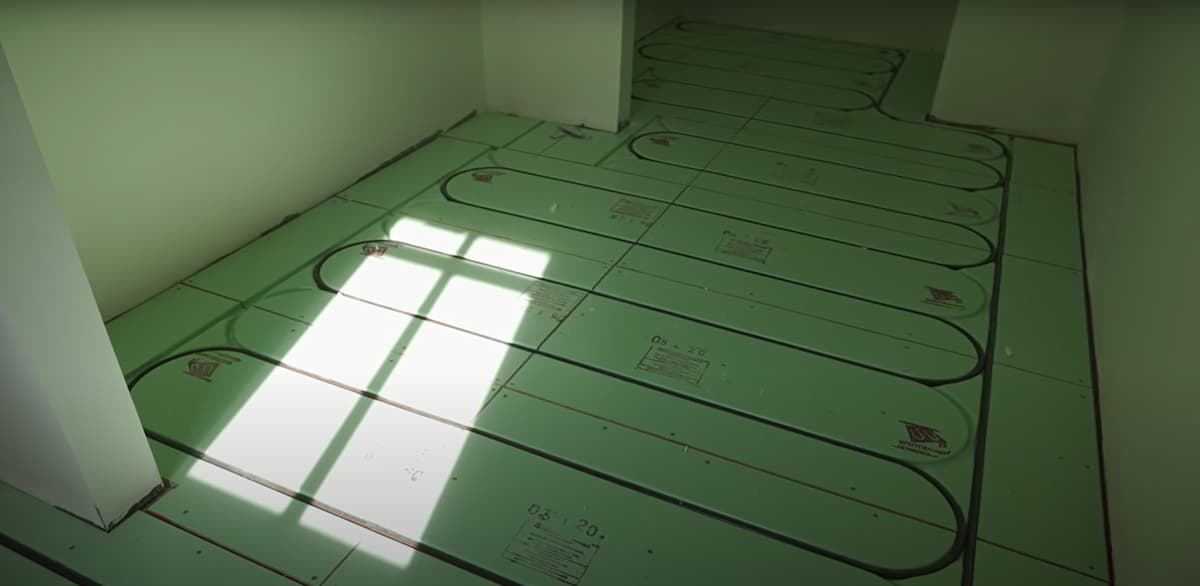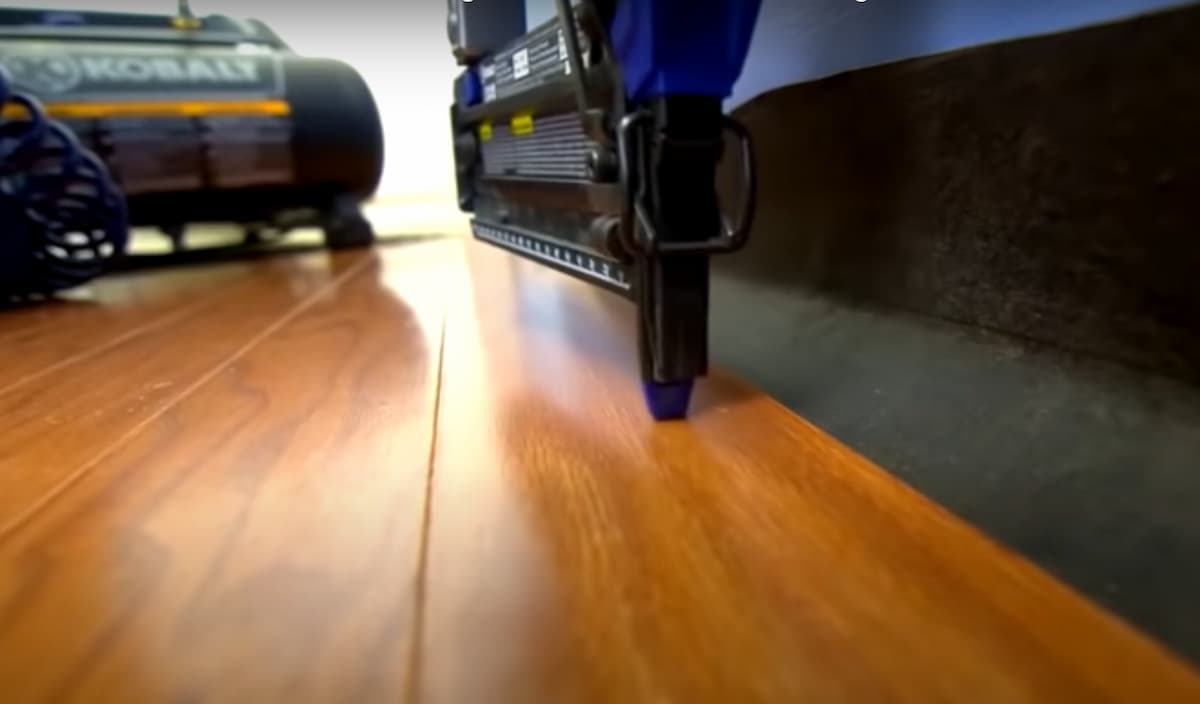
Engineered hardwood vs laminate flooring, which is best? Let’s find out.
Today’s flooring industry offers many choices for homeowners to select from. Floor coverings made from a wide variety of materials are available that bring both beauty and practicality to any home. Choosing the right one can be a difficult decision, especially when it comes down to laminate flooring vs engineered flooring. You may wonder if your needs may be met with either product or if you could look for another option entirely. To help make the decision easier, let’s take a closer look at each type of flooring.
Laminate Flooring
Laminate flooring is generally made up of wood fibres pressed together with melamine resin or other binding materials sandwiched between layers of high-density fiberboard (HDF) or plywood. The finished product is almost always covered with a high-pressure laminate (HPL), which is essentially plastic. This makes it very resistant to water, scratches and most household chemicals.
Laminate flooring has many different looks including wood, stone, tile and even cobblestone. They come in various patterns with options for solid colours or printing techniques that produce the look of granite or marble at far less cost than trying to find real materials that may work well in your unique space.
Engineered Flooring
Engineered floors are most often made with three layers of wood material
- An upper layer of hardwood or maple,
- A middle layer of either plywood or HDF,
- A bottom layer of softwood that is typically poplar.
The type of wood used and the processing method may usually determine the cost and quality of engineered wood flooring making it a more budget-friendly choice than some other options, such as solid hardwood or rare types of stone.
Engineered floors are very durable, meant to last for many years without showing signs of wear and tear under normal household conditions. They also absorb moisture better than laminate flooring which makes them ideal for rooms with high humidity levels, such as kitchens and bathrooms where water is often spilled or excessive amounts of steam may be present.
Difference Between Laminate and Engineered Flooring
The basic difference between laminate and engineered hardwood flooring is the number of layers. Laminate flooring is made up of one top layer (HPL) sandwiched between two layers of different types of wood or HDF, while engineered floors typically only have three layers with an upper and lower layer made from hardwood and middle plywood or HDF layer.
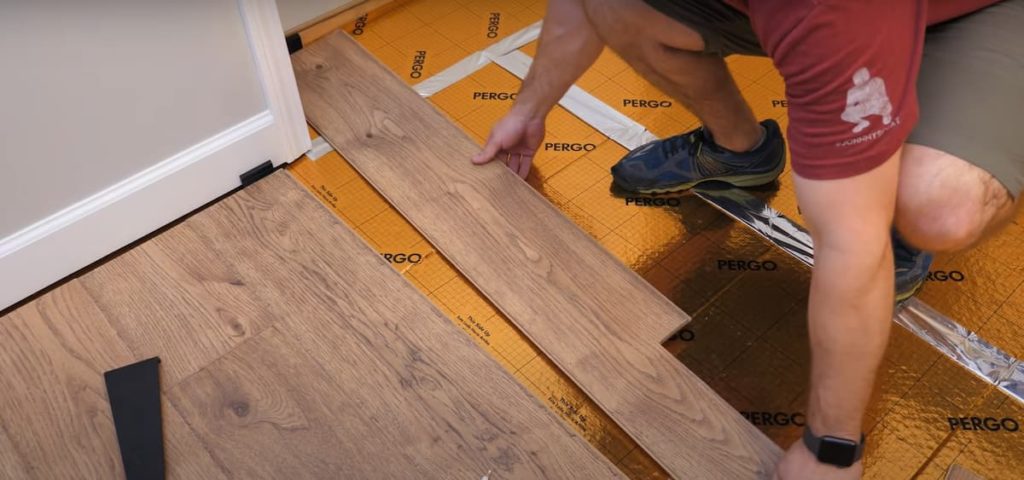
Durability Between Laminate and Engineered Flooring
Laminated floors tend to be more durable and less susceptible to dents and scratches than engineered floors because they use melamine resin as a binding agent that makes them very strong and resistant to chemicals such as bleach. Engineered wood flooring may not absorb water quite as well as laminates but still do far better than most other materials such as solid hardwood or tile options.
Range of Colour Between Laminate and Engineered Flooring
Laminate flooring also offers a wider range of patterns and styles than engineered floors. Engineered hardwood only comes in solid colours, with a possibility of different stains being applied to the top layer to create a unique look. Laminate flooring has the ability to be printed with just about any pattern imaginable which allows you to install it without having to worry about matching existing decor or worrying if it may match as time goes on.
The downside is that laminates are more expensive overall because they require additional steps in manufacturing plus there are fewer suppliers so homeowners have less choice when comparing prices from one retailer to another.
Engineered vs Laminate Flooring
This can be easily decided upon by taking into consideration the types of household activity that take place in the area where you plan to install this flooring and how long you expect it to last.
If your home has high humidity levels, like a kitchen with an installed tile backsplash or bathrooms often used by many people who may not necessarily clean up after themselves all of the time, then laminate is likely your best option because engineered wood flooring tends to absorb moisture at a faster rate than laminates do.
On the other hand, if you live in an area with low humidity and need something that’s easy to handle and maintain then engineered hardwood may be just what you’re looking for since they require less upkeep overall compared to laminates.
Engineered and Laminate Flooring-What is Better?
Engineered wood flooring has become more popular over the years due to its increasing availability at retail stores. There are currently three types of engineered floors sold in the market today with each having its own pros and cons with respect to cost, installation difficulty, durability and appearance.
Among these types of engineered wood flooring, real wood laminates have the upper hand when it comes to aesthetics as you have a wider selection of printing patterns compared to engineered hardwood. However, laminate is not suitable for use in areas that are high humidity or damp such as bathrooms or kitchens since water can easily seep through so this limits where you can install laminate flooring.
On the other hand, although solid hardwood flooring looks elegant and beautiful, they are very difficult to install particularly if you’re a beginner. And since solid hardwood products come in full-length planks, the installation requires more time and effort compared to engineered wood flooring.
Laminate vs Engineered
Engineered wood flooring is also known as strip or click lock flooring. It is made of five layers. Most of the time, it is composed of three thin layers of plywood with an HDF board in between on each layer and a top layer of hardwood printed with an Ebony finish for both aesthetics and protection. Below we may take a closer look at what goes into engineered hardwood flooring to help you understand its composition better.
Top Layer
This consists of a thin veneer and comes in many different colours and designs such as rustic oak, white oak, maple, cork etc., depending on preference.
You can choose from options such as unfinished solid wood which may require staining before installation, prefinished solid wood or engineered hardwood which is pre-stained and sanded to save time during installation.
2nd Layer
The second layer of plywood strengthens the flooring so it can withstand any type of traffic. It also comes in different sizes depending on preference.
3rd Layer
Adhesive layers are added to strengthen the bonding between the veneer and plywood for extra durability. This ensures that your floor may last longer although this may impact its environmental friendliness as more adhesives are required for installation.
Bottom Layer
This is made of HDF (high-density fiberboard) which has a high resistance to moisture compared to regular wood materials since laminate floors come with waterproof layers already attached to make them more durable.
HDM (high-density medium)
HDM is located in the centre of the hardwood engineered wood flooring to help maintain its stability, making it more rigid and stable compared to regular wood floors.
Manufacturers usually sell prefinished hardwood which means that this layer has already been sanded and finished with a protective layer of UV-cured polyurethane which helps protect your floor from scratches, dents or other types of damage during installation.
Engineered vs Laminate
Both engineered and laminate floors have a number of benefits that you may find useful. Here are some of them.
Laminate Flooring is Very Fast to Install
If you want something that takes less time to install, then laminate floors can be a good choice as it comes prefinished with an adhesive backing so all you need to do is lay it down over the subfloor and attach using a tapping block for better bonding.
In contrast, engineered hardwood needs more time to install since additional care could be given especially if this may be used at home where there are kids moving around all the time. That’s because its thin layers make it easy for cracking or breaking which means having a professional installation is recommended for safety reasons.
Engineered wood flooring is more durable but laminate flooring is a good option for people who have a busy lifestyle and don’t want anything that can easily break or crack. However, engineered hardwood is even more durable as it requires high-end technology during the installation process which makes your laminated floor last longer.
The Surface
The surface of both engineered and laminate floors remain stable over time due to the adhesives used in their production. When you buy either an engineered or laminate floor from Amazon Flooring Superstore, you can be sure that the surface may remain stable over time even with exposure to sunlight or moisture since they are composed of waterproof materials. This makes them ideal for areas such as basements, bathrooms, kitchens etc., which usually get exposed to these elements.
Engineered Hardwood Flooring is Eco-friendly
If you care about the environment, then consider engineered hardwood for your flooring because it comes with chemical-free finishes which are formaldehyde-free and VOC free so this may not impact the quality of indoor air in your home. On top of that, components used in its production are recyclable or can be reused.
Laminate Flooring vs Engineered Flooring Installation
Engineered hardwood vs laminate installation is similar in many ways so they are equally easy to install. However, both have different types of installation which you could be aware of before making a final decision on what flooring to buy for your home.
Laminate Flooring is Much Faster to Install
Laminate floors usually come prefinished with an adhesive backing that can attach to the subfloor quickly and easily. This means that all you need to do is lay it down over the subfloor and tap it with a tapping block for better bonding.
Engineered Wood Floors Take More Time to Install
Engineered hardwood needs more attention during installation since additional care could be given especially if this may be used at home where there are kids moving around all the time. That’s because its thin layers make it easy for cracking or breaking which means having a professional installation is recommended for safety reasons.
Engineered Flooring vs Laminate Flooring
When choosing between laminate and engineered wood, here are some points you could consider.
Your Lifestyle and the Use of Your Home
If you have kids at home who usually run around all day, then having either engineered hardwood or laminate floor is a great option as they both come with protective finishes that can resist scratches and dents.
Also, if you live in a house where there’s lots of debris such as rocks or tree branches then you might want to consider prefinished hardwood because prefinished material resists those elements better than unfinished softwoods. However, if you want something that comes with more warranty coverage, then consider buying engineered hardwood flooring.
The Verdict: Engineered Hardwood vs Laminate Flooring
Both engineered hardwood and laminate floors offer homeowners great options depending on the features they like, but each has its own pros and cons.
Engineered Hardwood Flooring
Engineered hardwood may cost more than laminate flooring, but it offers you the best protection for your investment. If you want something that can resist scratches or dents both under normal conditions and weather-related conditions, then you could consider engineered hardwood. It also offers the best warranty coverage when installed by a professional flooring company.
Laminate
Laminate flooring comes with attractive finishes which is easy to maintain and dries quickly when exposed to water or moisture. However, it can crack or dent easily if there are sharp objects or heavy equipment running above it. This means that laminate floors are best for homes with kids who usually stay indoors.
Verdict
Regardless of whether you choose engineered hardwood or laminate flooring, you can be sure that both may give your home a wonderful new look that is easy to maintain and durable enough to last the years in top condition. Engineered hardwood and laminate floors each have their own pros and cons, but the benefits of owning a home with either one of these great flooring options clearly outweigh the disadvantages.


